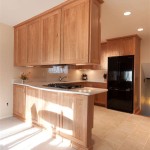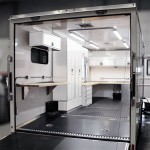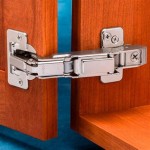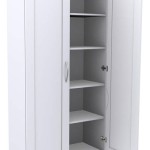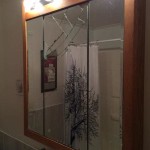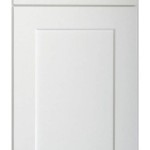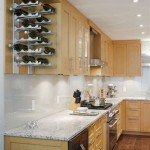What Are The Parts of a Cabinet Hinge Called?
Cabinet hinges, often overlooked, are critical components responsible for the smooth and functional operation of doors and drawers. Understanding the different parts of a cabinet hinge facilitates effective troubleshooting, repair, and selection of appropriate hardware for various applications. Hinges, despite their relatively simple appearance, comprise several distinct parts, each contributing to the overall performance. This article details the nomenclature and function of each part, providing a comprehensive guide to cabinet hinge anatomy.
Cabinet hinges come in a wide variety of styles, including concealed hinges, butt hinges, overlay hinges, and inset hinges. While specific designs may vary, the fundamental parts remain consistent across most types. Acquiring a working knowledge of these components will enhance the ability to identify suitable hinges for specific projects, diagnose problems, and communicate effectively with hardware suppliers or installers.
Leaf and Knuckle: The Foundation of Movement
The leaf is arguably the most prominent part of a cabinet hinge. It is the flat, metal plate that is attached to both the cabinet frame (the stile or face frame) and the door. A standard hinge consists of two leaves, one fixed to the cabinet and the other to the door. Each leaf usually has pre-drilled holes for screws, enabling secure attachment. The size, shape, and gauge (thickness) of the leaf will vary depending on the type of hinge and the load it is designed to bear. Larger or heavier doors require hinges with larger and thicker leaves for increased stability and durability.
The knuckle, also known as the barrel or joint, is the cylindrical or rounded section that connects the two leaves. It forms the pivot point around which the leaves rotate, allowing the door to swing open and closed. The design and construction of the knuckle significantly impact the hinge's smoothness of operation and overall strength. Some hinges feature multiple knuckles for added stability, particularly in heavier applications. The knuckle is often constructed from a durable metal to withstand repetitive use and minimize wear.
The leaves and knuckles are interconnected to enable the rotational movement. The alignment and precision of this connection are crucial for smooth and quiet operation. Any imperfections or damage to the leaves or knuckles can result in binding, squeaking, or even complete failure of the hinge.
Pin: The Axle of Rotation
Located within the knuckle, the pin is a cylindrical rod that passes through the aligned knuckles of the two leaves. It serves as the axle, allowing the leaves to rotate smoothly around it. The pin is typically made of metal, such as steel or brass, and is often secured in place to prevent it from sliding out during use. Some hinges feature removable pins, allowing for easy removal of the door from the cabinet frame. This is particularly useful for painting, cleaning, or replacing the door.
The pin's material and construction are critical for the hinge's durability and longevity. A weak or improperly seated pin can cause the hinge to fail prematurely. Pins are sometimes coated with lubricating materials to reduce friction and ensure smooth operation. In some high-end hinges, the pin may be made of hardened steel or feature specialized coatings for enhanced wear resistance.
The diameter of the pin is important for strength and smooth operation. Thicker pins generally provide greater strength and stability. The fit of the pin within the knuckle must be precise; a loose pin can cause rattling and instability, while a pin that is too tight can restrict movement.
Screws: Securing the Connection
While seemingly simple, the screws used to attach the hinge leaves to the cabinet frame and door are vital components. The type, size, and number of screws directly impact the hinge's holding power and overall stability. Typically, wood screws are used for cabinet applications, featuring a sharp point and coarse threads designed to grip the wood securely. The length of the screw must be appropriate for the thickness of the cabinet material to ensure a strong hold without protruding through the back of the wood.
The material of the screws is equally important. Steel screws are commonly used for their strength and durability. Brass screws offer a more aesthetic appeal and are often used in decorative applications. It is essential to use screws with the correct head type, such as flat head or pan head, to ensure a flush and secure fit within the pre-drilled holes in the hinge leaves. Countersinking the screws is often recommended to prevent the screw heads from protruding and interfering with the door's operation.
Using the wrong type of screw or overtightening them can damage the wood and compromise the hinge's stability. Stripped screw holes can be repaired using wood glue and small wooden dowels before re-installing the screws. The quality of the screws is often indicative of the overall quality of the hinge itself.
Overlay, Inset, and Full Inset: Defining Door Position
While technically not a physical part of the hinge itself, the concepts of overlay, inset, and full inset are crucial for understanding how different hinge designs function and how they position the door relative to the cabinet frame. These terms describe the relationship between the door and the cabinet opening.
An overlay door sits on top of the cabinet frame, partially or completely covering the frame opening. Overlay hinges are designed to allow the door to swing open while clearing the frame. The amount of overlay, typically measured in inches or millimeters, dictates the type of hinge required. Partial overlay hinges are used when the door only partially covers the frame, while full overlay hinges cover the entire frame opening. The most common is a half-overlay, where the door covers half of the frame, allowing two doors to meet in center.
An inset door is flush with the cabinet frame when closed. Inset hinges are designed to allow the door to swing open while remaining flush with the frame in the closed position. These hinges often require more precise installation than overlay hinges to ensure proper alignment. Full inset doors are completely recessed within the cabinet frame.
Understanding the overlay, inset, or full inset of a cabinet construction is essential for selecting the appropriate hinge design to achieve the desired aesthetic and functional outcome. Failure to consider these factors can result in doors that do not close properly, bind against the frame, or are misaligned.
Adjustments and Dampers: Enhancing Functionality
Many modern cabinet hinges incorporate features that enhance their functionality beyond simply allowing the door to swing open and closed. These features include adjustment screws and soft-close dampers. Adjustment screws allow for fine-tuning the door's position, ensuring proper alignment and gap control. These screws typically adjust the door's vertical, horizontal, and depth (overlay) position in relation to the cabinet frame.
Soft-close dampers, also known as soft-close mechanisms, are hydraulic or pneumatic devices that gently slow the door's closing motion, preventing slamming and reducing noise. These dampers are often integrated into the hinge itself and provide a smoother, more controlled closing action. Soft-close hinges are particularly popular in kitchens and bathrooms, where noise reduction is desirable. The damper mechanism usually consists of a small piston and cylinder filled with a viscous fluid that resists movement, slowing the door's closure.
The inclusion of adjustment screws and soft-close dampers represents a significant advancement in cabinet hinge technology, offering enhanced functionality and improved user experience. These features are particularly valuable in high-end cabinetry and applications where precision and noise reduction are paramount.
Materials and Finishes: Aesthetics and Durability
The materials used to construct cabinet hinges impact their durability, strength, and aesthetic appeal. Common materials include steel, stainless steel, brass, and zinc. Steel hinges are typically the most affordable and offer good strength and durability for general applications. Stainless steel hinges provide excellent corrosion resistance, making them ideal for use in damp or humid environments, such as kitchens and bathrooms.
Brass hinges offer a more decorative appearance and are often used in traditional or antique cabinetry. Brass is more malleable than steel, making it easier to shape and finish. Zinc hinges are often used in concealed (European-style) hinges and offer a good balance of strength and affordability.
The finish applied to the hinge also contributes to its aesthetic appeal and corrosion resistance. Common finishes include polished chrome, brushed nickel, oil-rubbed bronze, and painted finishes. The choice of finish should complement the overall design of the cabinetry and hardware. The finish may be applied through processes such as plating, powder coating, or painting.
Selecting a hinge with the appropriate material and finish is crucial for ensuring both its long-term performance and its aesthetic integration into the cabinet design. Factors to consider include the environment in which the hinge will be used, the style of the cabinetry, and the desired level of durability.

Cabinet Hinges Types Guide Diffe Of

Guide To Drilling Hinge Holes In Kitchen Doors Tips Tricks

Cabinet Parts And Profiles
What Are The Parts Of A Hinge Essentra Components Us

Types Uses Components And Considerations Of Hinges

Everbilt 1 Pair Frameless 35 Mm 110 Degree Full Overlay Nickel Cabinet Hinge 2 Pieces Hc11sfe Np Cp

Anatomy Of A Cabinet Breaking Down The Parts And Pieces Vital Turnaround Furniture Works

21 Types Of Cabinet Hinges Explained
What Are The Parts Of A Hinge Essentra Components Us

Types Parts And Requirements Of Concealed Hinges
Related Posts

